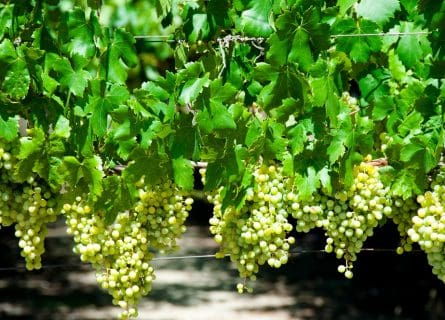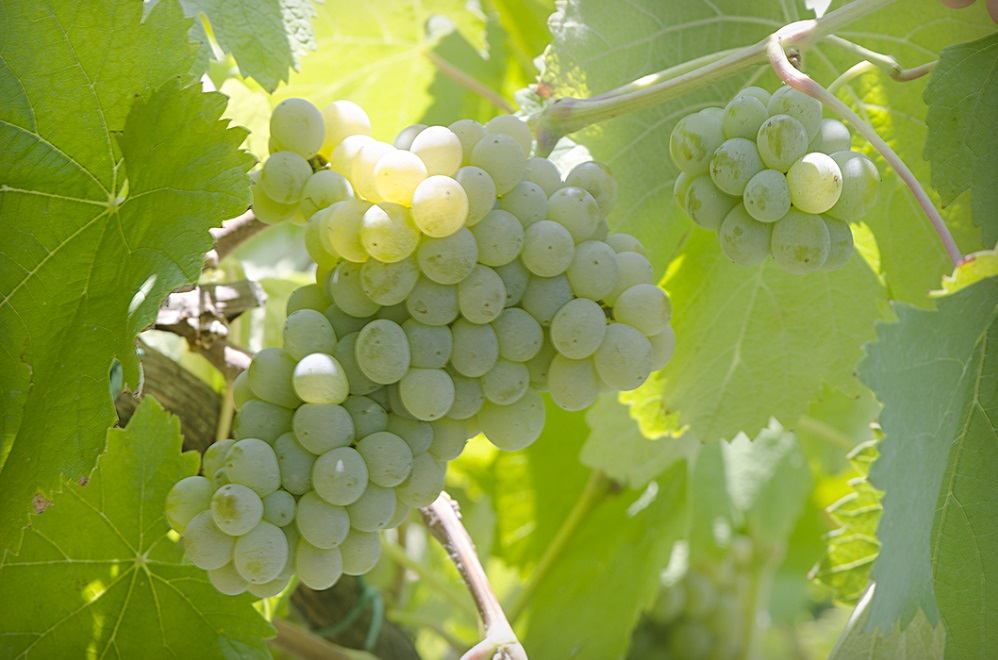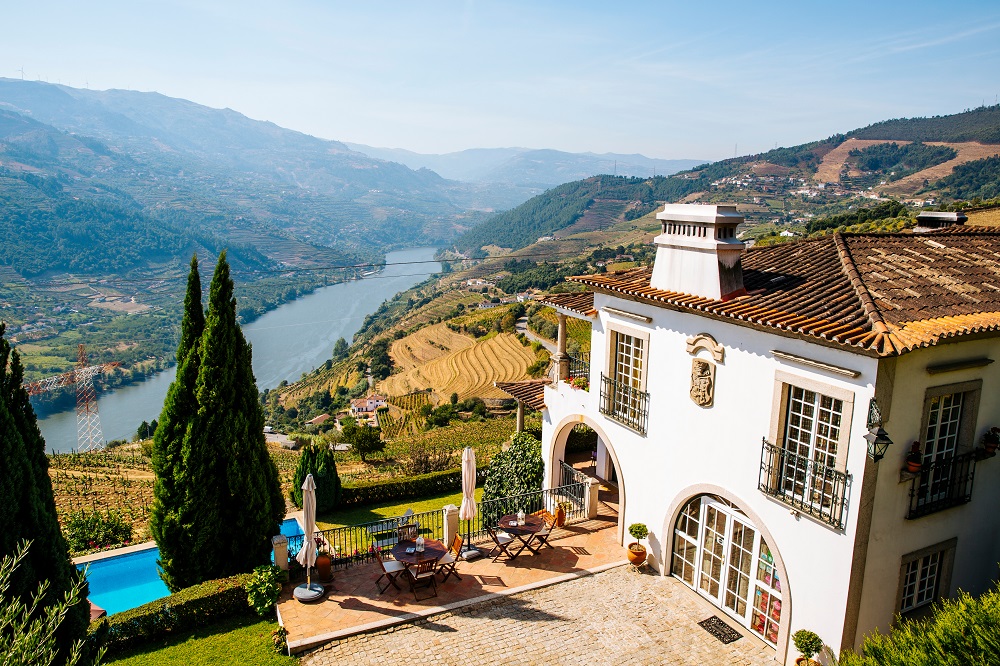
Verdelho Grape Variety: the Magic of Madeira
March 8, 2023
Uncover the history and unique characteristics of Verdelho, a lesser-known grape variety used to make fortified wines.
By: James lawrence / Last updated: February 3, 2025
Estimated reading time: 9 minutes
Portugal has been a late entrant to the world of saline and aromatic white wines. For decades, poor viticulture and outmoded equipment held the nation back – its reputation was solely built around the success of Europe’s greatest fortified wine style: Port. Yet Portuguese winegrowers are making up for lost time with fantastic grape varieties like Arinto. Also known by its moniker Arinto de Bucelas, the grape has played a key role in creating a new global market for Portuguese whites.

Guide to Portuguese White Wine: Read more
Of course, not every variety can tolerate the often punishing heat of the country’s vineyards – especially in the south. Thankfully, Arinto is a very high-acid grape, a quality that does not diminish even in the torrid climate of Alentejo. Classically used to bolster the acidity of white blends, Arinto is increasingly made into excellent single-varietal wine. Indeed, its crisp acidity and citrus-infused bouquet are winning over sommeliers from Lisbon to Sydney. And, best of all, there is an abundant supply.
Arinto is one of Portugal’s great viticultural travelers. You’ll find it in several of the country’s leading vineyards, including Minho, Ribatejo, Bairrada, Alentejo, and the Douro. Unfortunately, it is challenging to ascertain the grape’s origins precisely; Arinto was only referenced in writing in the 18th century, first mentioned by author Vicencio Alarte. However, a charming story involves German crusaders exporting Arinto to Portugal, taken from the Rhine Valley in the Middle Ages. It’s nice and romantic but also highly unlikely. Nevertheless, viticulturists strongly believe that Arinto began its life in the Estremadura region near Lisbon, spreading its wings to vineyards in the country’s northern and southern reaches.
Today, most visitors to Portugal head straight to its glorious beaches, pretty fishing villages, and many excellent restaurants. These are all very worthy pursuits! Yet the nation’s history can be equally as fascinating: Portugal has existed within borders virtually unchanged for nearly 800 years, making it one of the oldest nation-states in Europe. However, that doesn’t mean that Portugal hasn’t received its fair share of visitors. The Romans, who arrived in 216 BC, quickly subjugated the entire Iberian Peninsula. For centuries, the Romans ruled most of Western Europe, including the fertile lands of Spain and Portugal. Their power endured for over 600 years, during which time wine growing was normalized across almost every Portuguese region. At the same time, with its warm Mediterranean climate, the Algarve became a favorite spot for the Roman aristocracy to build fabulous second homes in the sun.
Unfortunately, it was not to last. The Western Empire collapsed in the 5th century, paving the way for centuries of war and conflict across Western Europe. Hispania (as the Romans named Spain and Portugal) was conquered by Germanic tribes from northern Europe, including the Visigoths, who established a short-lived capital in Toledo. However, the Moors from North Africa were far more successful in building a lasting civilization, creating a prosperous future out of the vacuum left by the Romans’ departure. Arriving in 711 AD, the Moors controlled most, but not all, of Spain and Portugal. Their impact on the local culture was profound: Muslims introduced exotic ingredients like saffron and lemons and pioneered arts and crafts. Their impact on architecture, medicine, and engineering was no less important.
Yet, from the perspective of the Christian monarchs, it was not their country to control. Reconquest of the Iberian Peninsula by the Christian Kingdoms of the north began in the 11th century, gradually pushing the Moors back into Andalusia. In the process, a small kingdom, considered at the time strategically unimportant, was recognized as an independent province by Alfonso Henriques in the 1100s. That kingdom was called Portucale. History also remembers Henriques as the monarch who recaptured Lisbon – with the help of English crusaders – in 1147.
From this point onward, Portugal enjoyed a Golden Age. The newly created nation expanded south into the Algarve, while Portuguese sailors founded colonies along the African coast and in South America. At the height of Portugal’s zenith, Vasco de Gama discovered India in 1498; the colonization of Brazil started in the 16th century. Trade with the East brought incredible wealth to the merchants of Portugal, creating a new middle class. Unfortunately, a military defeat in Morocco and an unforeseen invasion from neighboring Spain greatly damaged the nation’s economy. Indeed, Spain ruled Portugal from 1580 to 1640, severely curtailing the rights of Portuguese citizens.
After Portugal regained its independence, its fortunes were restored by gold from Brazil. In the 1700s, the chief minister, the Marques de Pombal, began to modernize the country’s ailing infrastructure – these grand projects greatly benefited the Douro and the Minho winegrowers. It signaled another age of prosperity, an epoch that endured until the Napoleonic wars. Nevertheless, by the mid-19th century, Portugal was a broken and impoverished nation. Neither did a military coup in 1926 help matters: the dictator Antonio Salazar could not alleviate the massive poverty that affected winegrowing regions such as Alentejo in the south.
However, the restoration of democracy in 1976 saw Portugal enjoy rapid economic growth at the end of the 20th century. This provided the essential financial stimulus to revive the country’s antiquated winemaking equipment – clean and crisp white wines are a relatively new phenomenon in Portugal. Nevertheless, the explosion of interest in premium table wines (of all three colors) has enabled regions like the Douro and Bairrada to compete successfully in export markets.
Of course, investment is only half the battle. You need grapes, too: Arinto has become astonishingly popular across Portugal for several reasons. The most important reason is that the grape is easy to grow. Arinto vines tend to experience bud burst late in the season and ripen at the end of the summer. Yet its small berries are usually packed full of acid, while the yield is seldom excessive. Moreover, Arinto can withstand a prolonged duration of heat and drought. The only potential fly in the ointment concerns mildew: Arinto is quite susceptible to oidium in wet weather.
Arinto’s main calling card is crunchy, youthful acidity that invokes a cool vintage of Muscadet! For that reason, the grape is a valued component in blends, often added to Albarino, Trajadura, and/or Loureiro in the vineyards of Minho. It also blends extremely well with Antão Vaz in Alentejo – the yin to that grape’s tropical yang. It can also make all the difference in sparkling wine production, transforming a humdrum cuvée into a vibrant, zesty bottle of fizz.
Wine producers, therefore, are often very concerned with maintaining that fresh acidity and fruity profile at all costs. That inevitably leads to a certain standardization of the winemaking paradigm when handling Arinto in the cellar. A typical process will involve hand-harvested grapes being chilled and treated with sulfur before being gently pressed to release pure juice, free of any phenolic pickup. The must will then be racked into a settling tank and chilled. This helps solid material to collect at the bottom of the vessel – skins, pulp, and pips. This protected juice is fermented at low temperatures, most commonly in stainless steel. It is then fined and filtered before the wine is blended and bottled.
Mono-varietal wines are by no means unheard of, however. Cabrita, a leading producer based in the Alentejo region, crafts an excellent wine from the grape. The winery states, “A manual harvest is undertaken in 20kg boxes. The grapes are directly pressed, followed by 75% fermentation in stainless steel and 25% in new French oak barrels at controlled temperatures. The wine is then aged for seven months.” What emerges in bottle could pass for barrel-aged Sauvignon Blanc: rich and textured, it offers a ripe bouquet of guava, pineapple, and apricot. It is, in every sense of the word, delicious!
In the 20th century, very few critics and sommeliers had even heard of this magnificent grape, much less the concept of Portuguese fine table wine. Yet, in 2023, Arinto has become one of the linchpins of Portugal’s white wine industry. Indeed, a warming climate demands ingenuity and adaptation if Europe is to continue to fashion elegant and fresh wines. Varieties like Arinto, much appreciated for maintaining high acidity in hot climates, will be vital to that future.

So you’ll find Arinto in almost every corner of the Portuguese landscape. In the Douro Valley, it is used to make funky blends, occasionally involving a dollop of Chardonnay! The grape thrives on the region’s well-drained schist and granite soils; it also copes very well with the Douro’s notoriously challenging climate—cold, wet winters and extremely hot, dry summers. Meanwhile, in the vineyards northeast of Lisbon, growers in Bucelas continue to make excellent Arinto wines that wear their acidity on their sleeve.
Once upon a time, the appellations that flank the Portuguese capital were dominated by co-operatives with little interest in premium winemaking. Yet this is old news: Lisbon’s obvious strength – high-quality dry whites – is now being exploited significantly. The best wines, often made from vineyards planted on limestone soils that benefit from cool Atlantic breezes, are stupendous. So, too, is the Vinho Verde of the Minho River becoming better and better with each new vintage. Some of the world’s most beautiful vineyards are found here, a Portuguese version of the rolling hills of Tuscany. Citrusy Arinto is becoming increasingly popular throughout the zone as a standalone varietal wine, although blends remain the mainstay of production. Nevertheless, every white wine producer in the country pays homage to the importance and versatility of Arinto. Without it, we would all be a lot worse off.
If you would like us to customize an exclusive luxury tour, contact us and let us know your travel plans. We offer luxury food and wine tours for private groups of a minimum two guests. In addition, all of our private, chauffeured tours are available year-round upon request.

